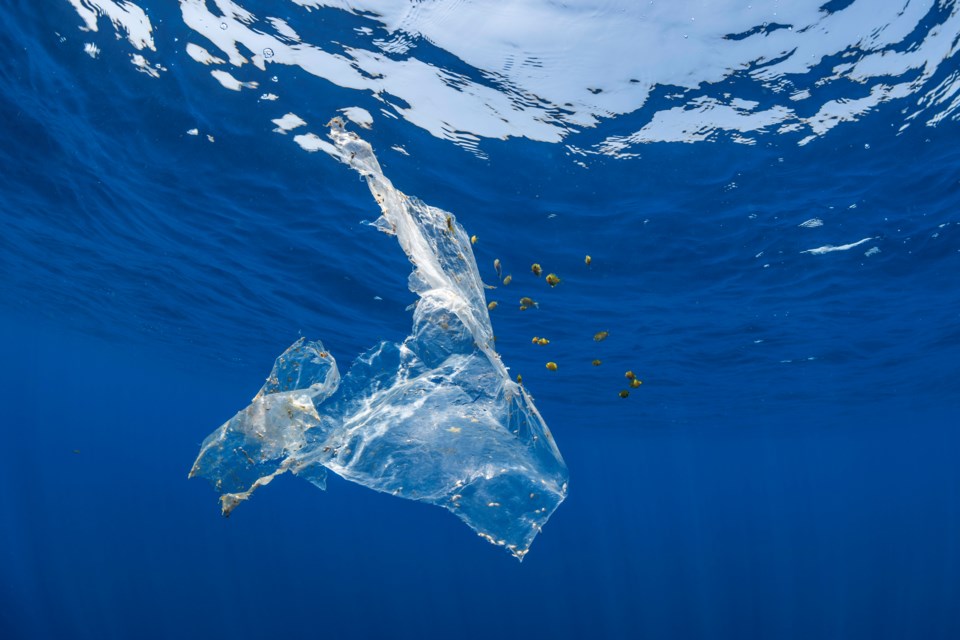Deliveries of Amazon packages led to a 29 per cent spike in plastic pollution in a year, a new study has found.
According a report from conservation organization Oceana, 271 million kilograms of plastic were produced by Amazon deliveries in 2020, up from 211 million kilograms in 2019.
More than a third of that waste entered oceans, rivers and lakes, says the report, with most of the plastic coming in the form of lightweight plastic films, such as bubble wrap.
“This amount is roughly equivalent to a delivery van's worth of plastic being dumped into major rivers, lakes, and oceans every 67 minutes,” notes the report.
Oceana Canada plastic campaigner Ashley Wallis says the “alarming rate” Amazon is growing its plastic footprint comes at a time when the United Nation considers plastic “the biggest threat to the global environment after climate change.”
Picture the air pillow filling the gap your new toaster can't in an Amazon package — 271 million kilograms of that plastic is enough to circle the planet more than 600 times.
In a statement from Amazon, a company spokesperson called the report “seriously flawed.”
“They have overestimated our plastics usage by more than 300%, and use outdated assumptions about the sources of plastic waste entering our oceans,” wrote the Amazon spokesperson, pointing to the effects of plastic waste from takeaway food and drink containers and fishing activities.
The spokesperson added that Amazon is making “rapid progress in reducing or removing single-use plastics from packaging materials around the world.”
In North America, the company says it’s looking to double the number of cushioned packages that can be fully recycled alongside paper and increase recycled content in single-use plastic film bags 25 to 50 per cent in 2021.
While criticizing what it slams as Amazon's “futile recycling promises,” Oceana says much of the inaction in Canada rests with federal authorities.
Last year, Ottawa said it would ban single-use plastics by the end of 2021. But that plan has since been delayed until 2022 as the government works on drafting new regulations and preparing industry for the changes.
The proposed ban covers six kinds of single-use plastics: plastic checkout bags, straws, stir sticks, six-pack rings, cutlery, and foodware made from hard-to-recycle plastics.
But that covers less than one per cent of all plastics produced in the world. And it does not include plastics used in Amazon deliveries, according to Oceana.
The conservation group is calling on the Canadian government to enact a “strong national ban” beyond its current proposed plastics ban.
Dozens of countries around the world have already banned single-use plastics. Amazon plans to end its use of single-use plastic packaging in Germany this year. Scaling that plan up around the world could lead to a significant drop in plastic pollution.
“Amazon has shown it can reduce its plastic footprint, but in Canada, whether it does or not will also depend on federal leadership,” said Wallis in a press release.
PLASTIC'S DEADLY EFFECTS
An estimated 11 million tonnes of plastic currently enters the ocean every year, accounting for 85 per cent of all marine waste. If the current levels of growth fail to change, that’s expected to triple over the next 20 years. By 2040, that would be equivalent to 50 kilograms of plastics per metre of coastline worldwide, according to a global assessment of plastic pollution from the UN Environment Programme.
The consequences are sweeping for animals, humans and shorelines.
A variety of life is killed or maimed by plastics every year: getting ensnared in ghost fishing gear is a leading cause of death among North Atlantic right whales — one of the world’s most endangered; seabirds eat plastics because it smells and looks like food; and sea turtles often mistake floating plastic bags for jellyfish, filling their stomachs and slowly staving them.
Humans are not immune to the pervasive impacts of plastics. Research has found microplastics are inhaled, absorbed through the skin and consumed through food and water — all eventually ending up in our lungs, livers, kidneys and even placentas.
Researchers from England’s University of Hull released a first-of-its-kind study last week looking at the impacts of microplastics on human health. Looking at contaminated drinking water, seafood and salt, the researchers found “cell death and allergic reactions” as potential effects of ingesting or inhaling high levels of microplastics. Further research into how the body excretes the plastics is required to understand the true level of risk, noted the authors.
E-COMMERCE BEHEMOTH MUST BE ACCOUNTABLE
Since the rise of the COVID-19 pandemic, consumers have increasingly turned to online shopping, leading to record sales for delivery giants like Amazon. In Canada, StatsCan estimates e-commerce sales skyrocketed nearly 111 per cent between May 2019 and May 2020.
In November, Amazon’s CEO of worldwide consumer Dave Clark told CNBC the company was on track to become the U.S.’s biggest delivery service by early 2022 at the latest.
All those deliveries and the plastic that comes with them needs to be accounted for, says Oceana. It’s calling on Amazon to have an independent audit of its plastic footprint, increase the number of items shipped in reusable containers and eliminate plastic packaging.




